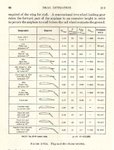Maximowitz
Tech Sergeant
Salutations,
Could the more technically minded please explain in laymans terms the benefits and deficits of high and low wing loadings in aircraft design? Over the years I've read numerous times that Messerschmitt designs favoured a high wing loading which was then criticised. If it was a bad idea why would he do it?
Thanks in advance.
Could the more technically minded please explain in laymans terms the benefits and deficits of high and low wing loadings in aircraft design? Over the years I've read numerous times that Messerschmitt designs favoured a high wing loading which was then criticised. If it was a bad idea why would he do it?
Thanks in advance.

